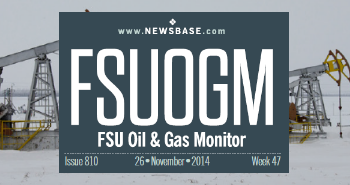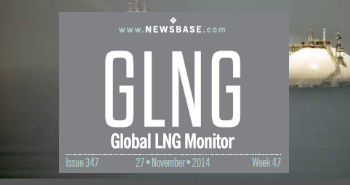Lack of shipping capacity thwarts Russian LNG ambitions
.jpg)
Western sanctions are thwarting Russia’s planned expansion in the global LNG market. Just when Moscow’s need to find new markets for its vast natural gas reserves has never been greater, the country no longer has access to Western equipment, technology and services it has relied on greatly to construct liquefaction terminals. On top of the existing EU+G7 sanctions introduced in 2022, the US State of Department last year applied its own measures, specifically targeting Russia’s flagship upcoming Arctic LNG-2 project, as well as the operators of floating storage units (FSUs) that are to facilitate shipping from the terminal. Even more sanctions arrived this month, targeting Novatek’s Murmansk shipyard due to receive modules for Arctic LNG-2’s second train, among other entities.
Sanctions have created numerous complications. Russia has had to shoulder a greater shoulder of financing to fund Arctic LNG-2, following the withdrawal of Western banks. The project’s operator Novatek also had to seek out less effective Chinese turbines to replace the US ones that were meant to power the facility, and the company is having to rely on its own, relatively untested liquefaction technology at some of the trains instead of the proven German solution it originally intended to use, to mention just some of the challenges.
Because of the US sanctions, Novatek will also find it harder to find recipients for Arctic LNG-2’s cargoes. At least some of the original offtakers that are partners in the venture, including France’s TotalEnergies, will no longer be able to receive its gas under sanctions. It will have to rely more on spot sales, to any companies and countries willing to risk sanctions.
However, the most significant impact that sanctions have had appears to be a lack of shipping capacity to physically deliver Arctic LNG-2’s gas to market.
Waiting on carriers
The first of three trains at the 20mn tonne per year (tpy) Arctic LNG-2 terminal was completed and entered commissioning late last year, according to Russian authorities. But there is a lot of uncertainty about when it will actually start shipping out cargoes. Originally, the terminal was due online at around the end of 2023. But Russian media now say that the launch will take place in March, because of the lack of shipping capacity.
Arctic LNG-2’s cargoes will have to traverse Russia’s Arctic Northern Sea Route (NSR) to reach markets in Asia, Europe and elsewhere. While climate change has made the route more navigable in recent years, specialised, Arc7 ice-breaking LNG carriers (LNGCs) are still needed to transport the gas for most of the year.
Novatek originally ordered 21 of these Arc7 LNGCs, but not a single one has arrived. As a result of sanctions and other delays, only nine of these vessels are likely to be ready for service within the next two years.
Three of these anticipated LNGCs were constructed at Hanwha Ocean’s shipyard in South Korea, and another trio are being built by Japan’s Mitsui O.S.K. Lines (MOL). The problem is that these vessels were due to be operated by Russian state shipowner Sovcomflot and chartered out to the Arctic LNG-2 operating company, both of which have been replaced under sanctions.
In other words, they will need to be sold and chartered out to another company that is not under sanctions. Russia is likely to establish new entities in other countries, hiding their ultimate owner, to buy the vessels. It appears to have attempted to do just that earlier this month, with Hanwha Ocean transferring one of the LNGCs, named Piotr Kapitsa, to a Dubai-based firm called New Transhipment FZE. But the vessel was subsequently returned to Hanwhat Ocean, according to ship registry data, perhaps in light of the latest sanctions introduced last week.
Russia could attempt similar such manoeuvres. The vessel could, potentially, also be transferred to Novatek itself, as that company is not targeted directly by sanctions. Of course, the US could well respond by sanctioning Novatek, but it might be reluctant to do so, as this would endanger LNG flow from Russia’s existing Yamal LNG terminal, also operated by the company. Washington has stated before it does not wish to disrupt current Russian LNG supply to the global market, including to US allies in Europe.
The remaining three vessels were ordered at Russia’s own Zvezda shipyard in the Far East, and appear to have been completed. While shipyards in South Korea and elsewhere have decades of experience building LNGCs, these are the very first to be built in Russia. That raises the risk of technical issues in their operation.
These nine LNGCs alone are not enough to handle all production from Arctic LNG-2’s first and second trains, the latter of which is expected up and running at the end of this year. And Russia will find it challenging to build the remaining vessels that it needs on its own, given the sanctions on Western equipment and technology. Building an LNGC is far more technically complicated than constructing an oil tanker. To cite just one of the major problems, nearly all membrane containment tanks installed on LNGCs in the world are designed and built by just one company, France’s GTT, and it would be difficult for Russia to replicate that technology.
Circling back, the Western sanctions imposed on Novatek’s FSUs could present another headache for shipping. These units are due to be positioned in Murmansk, in northwest Russia, and Kamchatka, in the Far East, to facilitate westward and eastward exports respectively from Arctic LNG-2. The specialised ice-breaking LNGCs can offload their cargoes at these FSUs, and those cargoes can then be transported by regular LNGCs to their final destination. Without these units in operation, Novatek would have to rely on the costlier-to-operate icebreakers to transport cargoes all the way to market, raising transport costs and limiting shipping volumes.
All in all, Russia will have its work cut out to overcome these many challenges, both at Arctic LNG-2 and other projects it advances in the future. And while it is unclear how long sanctions on its LNG sector will remain in place, depending greatly on the outcome of the conflict in Ukraine, it seems clear that the West has succeeded in significantly delaying Russia’s advances in the LNG space – something that Moscow has been counting on in the long term, in additional to extra pipeline exports to China, to offset the loss of most of its market share in Europe over the past two years.
Furthermore, with the global LNG market set to potentially swing back to oversupply in the latter half of this decade, thanks to a wave of new US and Qatari capacity coming on stream, Russia may have lost its window of opportunity to carve out a major slice of this market.





Follow us online